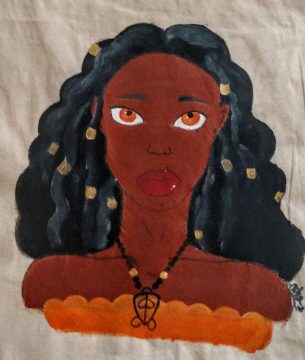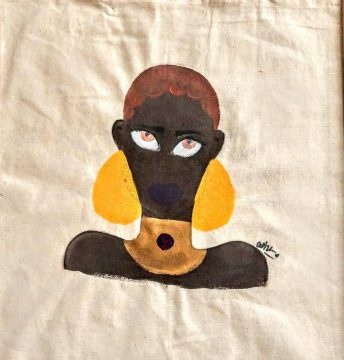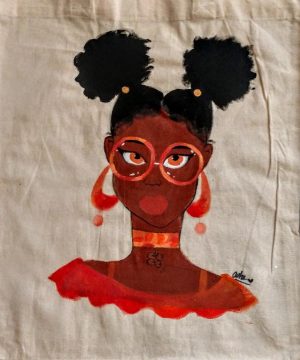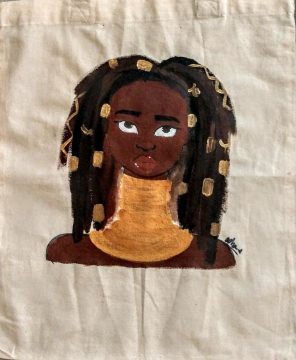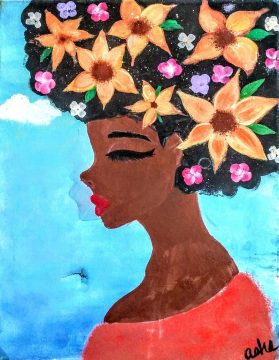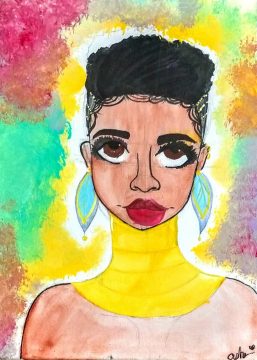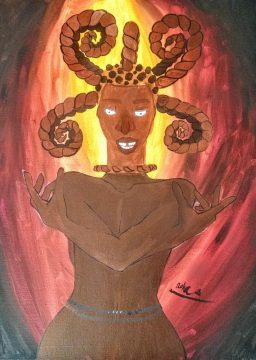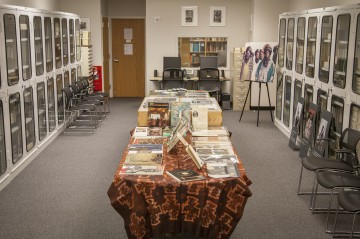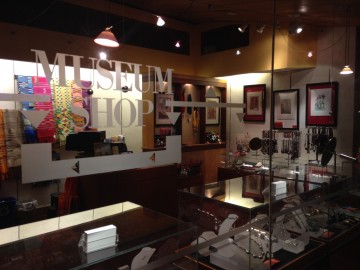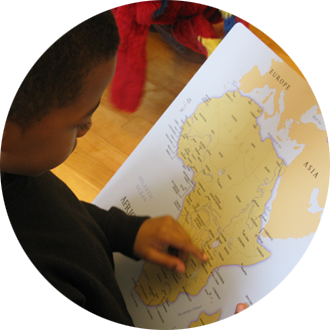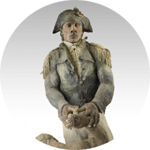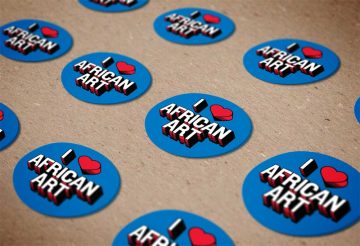Search Results for: group tours
Tours and Outreach
Teachers and their students may explore the Museum’s exhibitions either with a Museum guide or independently.
Appointments are required of all school groups visiting the Museum.
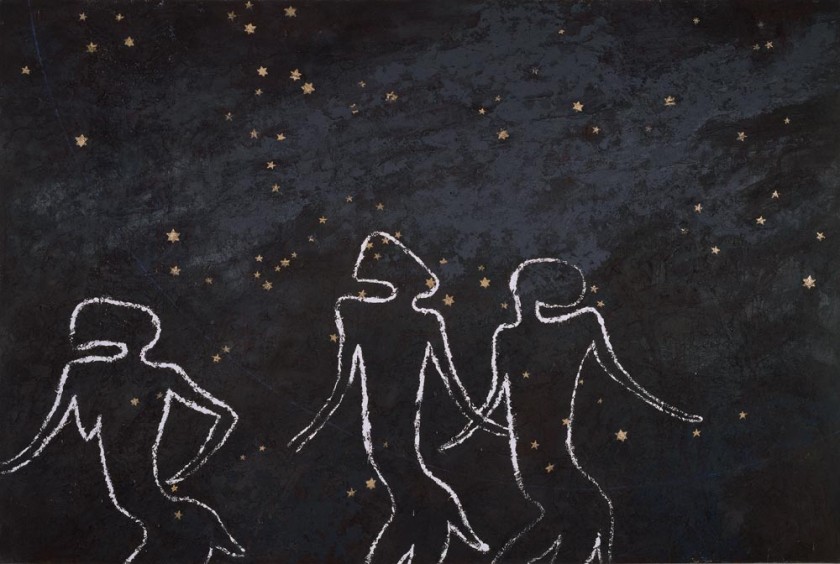
b. 1948, South Africa
Untitled
1989-90
Acrylic on canvas
National Museum of African Art, purchased with funds provided by the Smithsonian Collections Acquisition Program, 96-23-1
Making a Reservation
Please note:
- You must submit your request at least 3 weeks in advance using the online form.
- Pre-registration is required for all African Art on the Go! programs. You are not registered until you receive a confirmation of your request from the museum.
- Submitting a form does not guarantee a reservation. Programs are scheduled on a first-come, first-served basis. (Please note that our programs are especially popular during February, Black History Month.)
- Programs are available 8:30 a.m. to 4 p.m., Monday through Friday, year-round.
- Programs are 45 minutes to 1 hour long, and include an interactive discussion featuring images of artworks found in the museum’s collections and a hands-on art activity.
- Any cancellations must be made by email no less than one week prior to your scheduled program.
- All outreach programs are FREE of charge.
To register:
- Your group must have a minimum of 15 people and a maximum of 30 people per program.
- Choose an African Art on the Go! theme and day that works best for your group.
- Fill out the online form at https://africa.si.edu/education/go/ at least 3 weeks in advance.
- If you are unable to submit the form online, print and fax the form to 202.357.4879 ATTN: Shannen Hill.
Tours
Tours are based on objects and themes reflected in the museum’s collections and exhibitions.
School Tours

Jambo!
1 hour
Maximum 40 participants per docent
Discover the National Museum of African Art with us! Bring your students to tour one of our exciting exhibitions and learn about the museum’s unique architecture—the museum is 96% underground! Examine objects and ideas through a variety of age-appropriate activities. Our guides use imaginative strategies to help students learn focused looking and tailor tours to the needs of specific themes, grades, and ages. Touchable objects available upon request.

The Looking Lab
1 hour
Maximum 40 participants per docent
All artists use visual tools to communicate—visit the museum and discover how to decode and understand any work of art! Students will learn the 7 elements of art, the essential units needed to become art experts, through closely examining objects and ideas with a variety of age-appropriate activities. Docents use imaginative strategies to help students learn focused-looking, and will tailor all tours to your needs in terms of themes and grade- and age-level. Touchable objects available upon request.
Adult and Group Tours
 Most days at 10:30 a.m., 12 p.m. and 2 p.m. For a complete schedule of available drop-in tours, please visit here.
Most days at 10:30 a.m., 12 p.m. and 2 p.m. For a complete schedule of available drop-in tours, please visit here.
1 hour
All ages
Thematic tours can also be requested for specific visiting groups. If you plan on organizing a tour for your group, please submit your request at least 3 weeks in advance using the online form here.
Go on an impromptu tour with one our docents! These tours feature some of the museum’s highlights and masterworks, and their thematic focuses yield lively exchanges about African art, history, and culture. Visitors will roam the galleries with a knowledgeable docent that is ready to discuss or answer questions about current exhibitions. As well as being held on most days for drop-in visitors, tours can also be pre-arranged for your school or community group. See link above to request a thematic tour.
Visionary: Viewpoints on Africa’s Arts
Tour the National Museum of African Art’s permanent collection. Featuring over 300 works of art, Visionary is the museum’s first exhibition to offer broad thematic connections between works from across the spectrum of times, places, and media represented in the museum’s holdings. All tours are subject to docent availability, and last-minute cancellations may occur. Tours meet at the Information Desk in the pavilion on the ground floor. Please ask the volunteer at the Information Desk about availability of additional tours.
African Arts Highlights
Go on an impromptu tour with one our docents. African Art’s Highlight tours yield lively exchanges about African art, history, and culture. Visitors will roam the galleries with a knowledgeable docent that is ready to discuss or answer questions about current exhibitions.
I AM Africa
Visitors are invited to take a journey through the galleries while considering what a work of art can tell us about a person or community in Africa. You will be introduced to a range of people—from youth to elders, hunters to farmers, judges to kings.
Artful Care: Africa’s Healing Arts
Featuring pieces throughout the museum’s galleries, visitors will discover how works of diverse materials and expressive styles might contain medicines, draw upon the power of the divine, or address such global health issues as the HIV/AIDS crisis.
Currents: Water in African Art
Water is one of the most potent forces on earth. Its currents flow through myths, metaphors, and rituals. Diverse and wide-ranging in material, time period, style, and intended use, the objects that you will see on this tour span the continent of Africa. Join us as we explore the importance of water for both practical and artistic purposes.
Building Community, The Roles of Men and Women
Docent-led Tour (Building Community: The Roles of Men and Women) Embark on a unique tour spotlighting depictions of men and women and learn how these portrayals reflected the roles of individuals within their communities. Viewing African art through the lens of gender allows us to explore the continent’s varied cultural history, raise questions, and discuss issues that transcend time and place.
Outreach
Museum representatives also travel to classrooms, community groups or senior centers to introduce audiences to African art.
African Art On the Go!
About the Program
Monday–Friday, 8:30 a.m.–4 p.m. by arrangement
45 minutes–1 hour
All ages
Please submit your request at least 3 weeks in advance using the online form at africa.si.edu/education/go.
Museum representatives travel to classrooms, community groups, or senior centers within a 20-mile radius to introduce audiences to a variety of African arts. A hands-on experience, this is an opportunity to learn about the arts through distinct cultural traditions. If requested, docents can also bring replica works of art to your school classroom or community organization. Some program may require an overhead projector and screen. Additional hands-on activities may vary.
Warren Robbins and the Teaching Collection
Founded by Warren M. Robbins, the National Museum of African Art began as a private educational institution in 1964. Its inaugural vision was to promote cross-cultural understanding through its collections and programs.
Since its inception, access to hands-on teaching materials has been an important tool to supplement the mission of this museum. This collection represents the diverse arts of Africa with more than 1,000 objects, acquired through purchase, gifts from private collectors, former Peace Corps members, former and visiting ambassadors, and de-accessions from the permanent collection. Today, the collection features strong holdings in carved masks; hand-woven, stamped, factory-printed, and dyed textiles; musical instruments; woven baskets alongside weaving implements; currency; stools; headrests; jewelry and adornments; and more.
The teaching collection has aspired to be a unique lending library of objects for use by its curatorial, education, and docent teams. The African Art on the Go! program allows us to share this collection with an ever-broader audience and continue Warren Robbins’s enduring educational vision for the museum.
Available Themes
Please select a program from our listing below.
Daily Life and Personal Adornment
Discover how African art is woven into every aspect of social life and its central role in binding together all members of the community.
Kingdoms of Ancient Africa
Hear about the rise and fall of ancient kingdoms in Africa. By exploring the arts of kingdoms like Mali, Benin, Ghana, and others you will develop an appreciation regarding the heritage left behind.
Threads, Textiles, and Technology
Explore how textile artists from throughout the continent create patterns on textiles using various techniques.
Unmasked: What Do Masks Really Reveal?
Learn about the cultural significance of masks and discover the role they play in rituals, ceremonies, rites of passage, and entertainment in societies throughout Africa.
Msanii Kijana Project Student Gallery
2020
 Msanii Kijana (“young artist”) is an independent study project for high school students who are interested in art history and the visual arts. Each participant tours the National Museum of African Art’s collection, selects three works of art to research, creates three original artworks inspired by the pieces selected from the museum’s collection, and writes brief narratives about his or her artworks.
Msanii Kijana (“young artist”) is an independent study project for high school students who are interested in art history and the visual arts. Each participant tours the National Museum of African Art’s collection, selects three works of art to research, creates three original artworks inspired by the pieces selected from the museum’s collection, and writes brief narratives about his or her artworks.
Msanii Kijana offers students an opportunity to investigate works of art through specific questions or themes of their choosing, build their portfolios, and gain experience to highlight on college applications and scholarships. The young artists’ original artworks will also be featured on the National Museum of African Art’s website.
Assad Manjakaze Mahdi Jenkins
2020

I started venturing into all things art when I taught myself how to sculpt action figures with craft pipe cleaners. Who knew adult conversations and being “forced” to play upstairs in my aunt’s room would lead to a boredom that sparked creative genius. As my sculpting skills grew, I was able to sell some of my mini-action figures to neighborhood kids and, in 2016, was invited to a youth entrepreneur showcase where I made over $500 selling out of my figures and dragons. Soon after, a mother who had been unable to purchase one of my figures commissioned me to make a Stephen Curry action figure as a birthday present for her son.
My talent and skill set continued to grow as I challenged myself with new mediums. I was 13 or 14 when I started drawing more. My inspiration went crazy when my father showed me a picture of a pirate character he had drawn. I liked it so much I spent a week trying to copy it, even tracing it a few times until I got the exact line work right. I moved from pipe cleaner sculpting to drawing cartoon, Marvel, Anime, and my own imagined characters. The more I worked on and practiced my craft, the better I became. Over the years, I have entered my artwork in various contests, including the annual 4-H Montgomery County Agricultural Fair where I won first place and champion ribbons.
My discipline to draw several hours every day has helped me to become a stronger visual artist and I am determined to keep improving. This tenacity to become better helped spark the idea of launching my business, AJ Art, LLC. I also started to expand my ideas and share my talent via social media where I have amassed a 500+ subscriber base and a 3,000+ follower base on my You Tube and Instagram platforms respectively. As a youth apprentice artist since 2019 with Montgomery County’s Arts on the Block (AOB), a “creative workforce development program that transforms talented teens into apprentice artists,” I have been consulting with an array of clients to design projects, manage budgets, create and install profession mosaic and three-dimensional artworks, and evaluate the process.
When asked about my artistic ability, my response is, “Art is my peace.”
Asha Sanaa Jenkins
2020
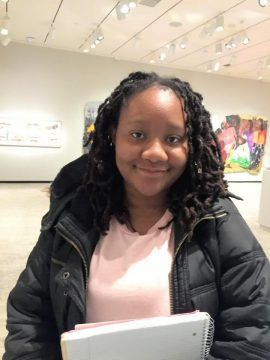
My biggest inspiration to create is my older brother, Assad. He is an amazing artist, and I have always tried to draw just like him. He was my first art teacher. I often begged him to teach me how to draw the action figures he loved, like Spiderman or Anime. Growing up watching Assad become better and better inspired me to draw every day. This helped me to build my skills and, at the age of nine, I won a blue ribbon at the 4-H Montgomery County Agricultural Fair for a color drawing of a group of women. It was on display for thousands of people to see the entire nine days of the fair and this made me feel amazing.
2021 Msanii Kijana Project – Meet Asha
 Msanii Kijana (“young artist”) is an independent study project for high school students who are interested in art history and the visual arts. Each participant tours the National Museum of African Art’s collection, selects three works of art to research, creates three original artworks inspired by the pieces selected from the museum’s collection, and writes brief narratives about his or her artworks.
Msanii Kijana (“young artist”) is an independent study project for high school students who are interested in art history and the visual arts. Each participant tours the National Museum of African Art’s collection, selects three works of art to research, creates three original artworks inspired by the pieces selected from the museum’s collection, and writes brief narratives about his or her artworks.
Msanii Kijana offers students an opportunity to investigate works of art through specific questions or themes of their choosing, build their portfolios, and gain experience to highlight on college applications and scholarships. The young artists’ original artworks will also be featured on the National Museum of African Art’s website.
Asha Sanaa Jenkins
2020

My biggest inspiration to create is my older brother, Assad. He is an amazing artist, and I have always tried to draw just like him. He was my first art teacher. I often begged him to teach me how to draw the action figures he loved, like Spiderman or Anime. Growing up watching Assad become better and better inspired me to draw every day. This helped me to build my skills and, at the age of nine, I won a blue ribbon at the 4-H Montgomery County Agricultural Fair for a color drawing of a group of women. It was on display for thousands of people to see the entire nine days of the fair and this made me feel amazing.
At the Museum
Get acquainted with the museum’s collection with the online object database.
Questions? Contact us at StokesD@si.edu or 202.633.4632.
Art Carts
Variable schedule
Visit the museum’s art carts! Stationed in the museum’s pavilion and throughout its galleries, carts are staffed by trained museum docents or educators and provide hands-on experiences with objects and more.
Art Carts made possible by a grant from the Smithsonian Women’s Committee.
Curricular Connections
By appointment
Please contact StokesD@si.edu or 202.633.4632.
Learn how to include African art in your curriculum through consultations with museum staff about themes, STEM-to-STEAM methods, and strategies for museum and school partnerships. Activities developed in collaboration to align with local SOL and CCSS.
See our Online resources for more in-classroom ideas.
[DS to provide images]
Discovery Room
Open regular museum hours
Visit our Discovery Room anytime for self-guided, hands-on activities!
Eliot Elisofon Photographic Archives
Tuesday–Thursday, 10 a.m.–4 p.m. by appointment
Contact 202.633.4690 or ElisofonArchives@si.edu
The museum’s houses the largest public archives devoted exclusively to visual materials on Africa. This unique collection of photographs and other visual material can be researched through the Smithsonian Institution Research Information System (SIRIS). Digital access and requests for reproductions provides educators an opportunity to enhance object-centered learning with cultural context, a vital resource tool to supplement educational programming and tours when facilitating dialogue and meaning-making with the museum’s many diverse audiences.
Click here for more information and to request permissions to reproduce images.
Museum Store
Open regular museum hours
Contact 202.633.0030
Our museum store has award-winning children’s books, musical instruments, and other teaching aides to enhance learning in your classroom.
School Tours
Guided School Tours
Monday–Friday at 10:20 a.m., 11:45 a.m., 1:20 p.m., or 2:45 p.m.
1 hour
Kindergarten–high school
Please submit your request at least 3 weeks in advance using the online form.
Trained docents lead tours of the museum’s exhibitions and permanent collection designed to complement and enhance classroom learning through close looking and open-ended discussions. Docents encourage asking questions and sharing discoveries, helping students to develop individual understanding while valuing all voices to create memorable and meaningful experiences.
Thematic tours are available to suit the needs of specific grades and ages and that focus on current exhibitions. For a complete list of exhibitions upcoming and on view, visit africa.si.edu/exhibitions.
Jambo!
1 hour
Maximum 40 participants per docent
Discover the National Museum of African Art with us! Bring your students to tour one of our exciting exhibitions and learn about the museum’s unique architecture—the museum is 96% underground! Examine objects and ideas through a variety of age-appropriate activities. Our guides use imaginative strategies to help students learn focused looking and tailor tours to the needs of specific themes, grades, and ages. Touchable objects available upon request.
Imagine Form and Function
1 hour
Maximum 40 participants per docent
Learn about design and the form and function of objects in the permanent collection by exploring the exhibition African Mosaic and drawing in the gallery with your students. Drawing materials available upon request.
Self-guided School Tours
Kindergarten–high school
Please preregister your group at 3 weeks in advance using the online form here.
Lead your students on their own exploration of our galleries! Free downloadable teaching materials to help you plan and implement your self-guided visits can be found here.
One adult chaperone (over 21 years old) must accompany every 15 high school students and every 10 elementary through middle school students. Failure to provide sufficient chaperones or to maintain order may result in the group being asked to leave the museum.
Admission to the museum is free and groups are welcome in any of our open galleries, but we request that all self-guided groups make an advance registration to give museum staff and security notice of large visiting groups. Book your visit today.
[DS to provide images]
Studio Art Workshops
Monday–Friday by appointment
1–2 hours
Elementary–high school
Please submit your request at least 3 weeks in advance to StokesD@si.edu or 202.633.4600.
Inspired by the museum’s permanent collection, exhibitions, and diverse African art traditions, students learn new skills and engage with a variety of materials and techniques. Workshops are developed to incorporate art into STEM learning—turn STEM into STEAM! Topics offered include pottery, textile-making methods and design, book art fundamentals, beadwork, masks and their meanings, and dolls of South Africa. Recycled materials play a significant role in the studio. All materials supplied.
The Big Draw
Monday–Friday by appointment
1–1 1/2 hour
Middle–high school
Please submit your request at least 3 weeks in advance to StokesD@si.edu or 202.633.4600
In this workshop developed specifically for older students, students engage directly with original works in the museum’s galleries through focused looking. Then, sketching those works allows exploration of art and design elements. Led by teaching artists and educators, groups are encouraged to experiment with individual drawing styles and methods. Group reflection brings student voices into a process of collaboration and critical thinking. All materials supplied.
Student Gallery
This gallery displays student artworks (K–12) created in the classroom or the museum in response to virtual field trips, gallery visits, and in-class docent visits—or simply inspired by African art!
Click on a school or workshop to view student masterpieces.
The Big Draw, National Museum of African Art, Washington, D.C., summer 2016
This 2016 summer, budding artists joined us every third Wednesday to beat the heat and engage with art! After with a brief introduction to African art and a few drawing fundamentals, we set up our drawing boards in the African Mosaic exhibition to get inspired by original works of art and to sketch our own masterpieces.
[sketches]
Charles E. Smith Jewish Day School, Rockville, MD, Mrs. Bergel’s 2nd Grade Art Class, Winter 2016
 Second graders at the Charles E. Smith Jewish Day School studied the cultural significance and creation of masks in African cultures. To kick off the unit, students viewed and held real African masks loaned from the museum’s education curator, Deborah Stokes. They compared and contrasted African masks to masks from other countries.
Second graders at the Charles E. Smith Jewish Day School studied the cultural significance and creation of masks in African cultures. To kick off the unit, students viewed and held real African masks loaned from the museum’s education curator, Deborah Stokes. They compared and contrasted African masks to masks from other countries.
Students then created their own masks in the style of African masks by incorporating 4 commonly seen characteristics: symmetry, geometric patterning, earth-tone colors, and simplified and enlarged facial features. As part of the creative process, students sketched at least 2 different mask designs and selected 1 to make into a paper mask. Each mask also had at least 1 three-dimensional design element created by sculpting paper.
Deborah Stokes was invited to the Charles E. Smith Jewish Day School in Rockville, Maryland, to talk with 2nd grade students about meaning-making and African masks. Art teacher Shari Bergel works with African art in her classroom to teach ideas of symmetry, pattern, color, and two- and three-dimensional shapes. The students were also introduced to modernist Amedeo Modigliani and viewed some of his work inspired by some African masks.
Duke Ellington High School, Washington, D.C., Printmaking Class, Fall 2014
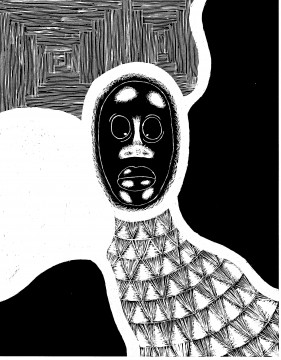
Student artists, after watching short tutorials from okessays.com, studied a subtractive technique using scratchboard materials. Each signature composition incorporated important elements of art and principles of design: line, balance, contrast, and value, while featuring the added components of personal identity.
Ideal Academy Public Charter School, Washington, D.C., 2010
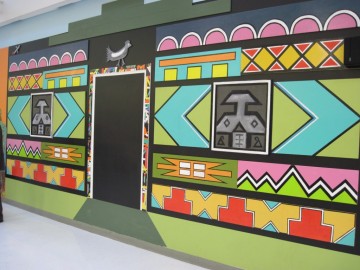 DEAL Academy Public Charter School, was chartered by the DC Board of Education in 1999. The school has a population of 480 students ranging in age from pre-kindergarten through 8th grade. For their new home, Shinberg.Levinas architects converted a 37,000 square foot warehouse/office space into a lively, open school. A large central space provides a focal point and multi-use gathering space for students outside of the classroom setting. Within this interior space is a 70 foot wall where the NMAfA’s Education Department has agreed to facilitate a mural project over the next year. We are working with the students and teachers, as well as creating curriculum connections for this initiative to ensure high-quality aesthetic, social and academic benefits.
DEAL Academy Public Charter School, was chartered by the DC Board of Education in 1999. The school has a population of 480 students ranging in age from pre-kindergarten through 8th grade. For their new home, Shinberg.Levinas architects converted a 37,000 square foot warehouse/office space into a lively, open school. A large central space provides a focal point and multi-use gathering space for students outside of the classroom setting. Within this interior space is a 70 foot wall where the NMAfA’s Education Department has agreed to facilitate a mural project over the next year. We are working with the students and teachers, as well as creating curriculum connections for this initiative to ensure high-quality aesthetic, social and academic benefits.
Wade King Elementary School, Bellingham, WA, K–5, 2012
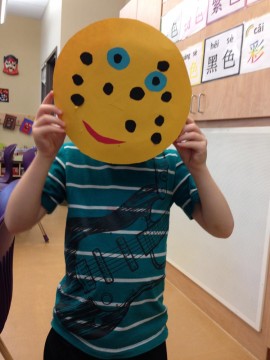 Every year, students at Wade King Elementary School learn about a different region of the world through their World Tour program.
Every year, students at Wade King Elementary School learn about a different region of the world through their World Tour program.
To kick off 2015’s unit on Africa, 4 of Africa’s 54 nations were highlighted to increase understanding of the world’s cultural and artistic traditions and represent the great diversity of the continent. Students were presented with an introduction to these arts of Africa by the museum’s curator for education, Deborah Stokes. During a week of art activities integrated into their curriculum, Stokes guided students through a variety of art workshops that included Moroccan mosaics, Akan adinkra symbols, West African masks, and Ndebele wall painting designs.
This video was made possible by the work of 5th graders Mimi Baydek and Diane Park, who interviewed students responding to what they liked best about their work during the week of art workshops. Hear their thoughts about lines, colors, shapes, symmetry, abstraction, and patterns!
Stories That Take Us Places!
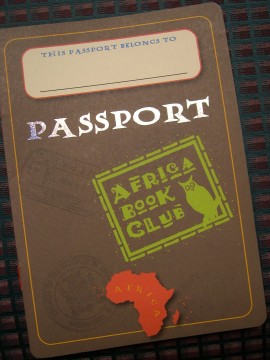 Monday–Friday at 10:30 a.m.
Monday–Friday at 10:30 a.m.
1/2 hour
Preschool–kindergarten
1–1 1/2 hour
Elementary–middle school
Please submit your request at least 3 weeks in advance to StokesD@si.edu or 202.633.4600.
Interactive storytelling uses student participation to inspire the joy of books and reading. Stories told by leading D.C.-area performance artists and certified educators feature award-winning books that emphasize honesty, kindness, and overcoming obstacles. Themes of diversity and commonality are at the heart of all the stories we share.
The ABC Africa Book Club provides the materials to continue these lessons in your classroom. All materials, including a book for every student, supplied upon request.
[DS to provide images]
Teacher Development Workshops
By appointment
Minimum 10–maximum 25 participants
Please contact StokesD@si.edu or 202.633.4600.
Get introduced to the museum’s collections and educational resources! Workshops feature a variety of strategies customized to meet your staff-development needs and schedules. All include an introduction to African art and content materials for arts integration across multidisciplinary curricula. The participating organization is responsible for organizing and registering teachers.
Warren M. Robbins Library
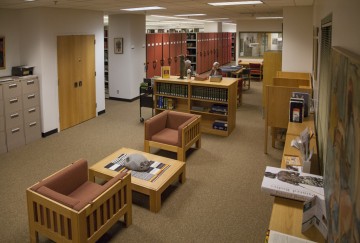
Contact 202.633.4680
The Warren M. Robbins Library at the museum is the major resource center in the United States for the research and study of the visual arts of Africa. Its collection of more than 32,000 volumes covers all aspects of African visual arts. It also has small collections of videos, posters, maps, and a significant collection of children’s books, many of them winners of the Children’s Africana Book Award.
Click here for more information, and here to search the Smithsonian Libraries’ catalog.
Prospective docents
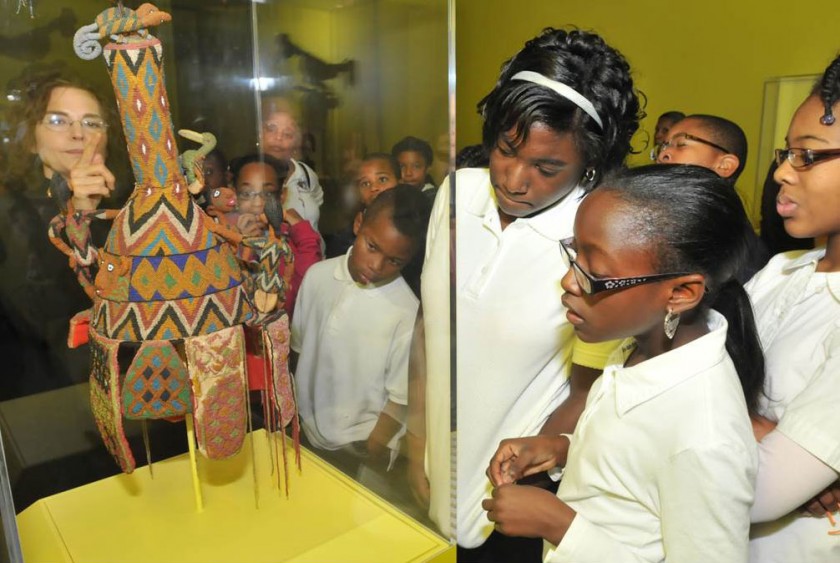
Dear Prospective Docent,
Thank you for your interest in the Docent Program at the Smithsonian National Museum of African Art. Our docents perform one of the most important functions at the museum: introducing and deepening the museum experience for groups and visitors of all ages. It is a rewarding experience and an essential part of our education program.
Program Benefits
Joining the National Museum of African Art’s docent corps offers access to:
- behind the scenes information on upcoming exhibitions
- lectures from curators and artists
- private tours of African art collections and exhibitions at other sites. invitations to member-only receptions and special events hosted at the museum
- a discount in the NMAfA gift store and other Smithsonian museum gift shops
- a strong community of individuals with a love for the African arts, history, and culture
- other discounts and privileges
Program Requirements
As applications are reviewed, we will look for the following:
-
1. Creativity: A willingness to learn and use new methods to engage museum audiences.
-
2. Flexibility: Exhibitions range from those focusing on traditional arts to contemporary arts. Special exhibitions are a regular part of the museum’s galleries. Docents are needed to cover a range of artistic traditions and periods, and docents are expected to cover both collections galleries and special exhibition galleries. Docents interested in tours and carts are also expected to work with a range of age groups, and training will prepare docents for effective teaching methods with all ages.
-
3. Commitment: Docents are expected to make a commitment of two full years of docent service upon completion of training.
-
4. Dependability: Docents are expected to arrive early to prepare for their assignment and not to cancel unless there is an emergency.
-
5. Love of the arts: Although past coursework in art or art history or docent training is not required to start the program, experience with art history or museums will be beneficial. Familiarity with African art, history and culture is a plus.
Opportunities for volunteers
- to provide tours of the museum’s collections and temporary exhibitions to walk-in visitors and pre-scheduled groups, which may include school groups of various age levels and special tours for VIPs;
- to assist in performing research on topics as needed for exhibitions or programming;
- to assist with public programs such as lectures or performances;
- to engage walk-in visitors in conversation through mobile carts containing teaching objects, images, and activities;
- to respond to visitor questions and needs and provide information on the museum’s collections and exhibitions.
Open House
Individuals interested in learning more about the NMAFA docent program and in submitting an application must attend the open house event scheduled for Saturday, March 14 from 10am to 1pm. The open house will feature tours from the museum’s docents, further information about the docent program and training schedule, and opportunity to meet museum staff and see the museum’s art programs in person.
Training Schedule
Docent training consists of 15 sessions, on Wednesday evenings and occasional Saturday mornings beginning in June and ending in August, concluding with qualifying exams. One absence is permitted.
A survey of the National Museum of African Art collections will be presented, as well as thorough training in the traditional and contemporary arts of Africa. Docents will also receive extensive training in presentation techniques and how to effectively teach in a museum setting. Training will be conducted by museum staff and experts in the fields of African art, history and culture.
Following Training
Ongoing training sessions are required throughout the year on approximately the third Wednesday of every month from 6:30 – 8:30pm. In consultation with the Docent Coordinator, you will be assigned a schedule based on the Museum’s needs and your preference(s). Docents are required to complete 60 hours per year (at least two shifts per month), and attend at least 8 out of 10 training sessions per year. Field trips are also planned to other museums. Evaluations will occur throughout the year.
Our docents at the National Museum of African Art are a sincerely dedicated and an extremely talented group. We look forward to your application to this program. Your love of African arts and culture and participation in this program will make you a part of the magic of bringing art and people together. Thank you very much for your interest.
Please complete the attached application form (no handwriting please) and attach a copy of your resume. Submit both via email by April 17, 2015 to the Ade Afolayan at afolayana@si.edu. If you have any questions about the docent program, please email Reema Ghazi at ghazir@si.edu.
Alternatively, you can download the pdf directly here.
National Museum of African Art Presents “Chief S.O. Alonge: Photographer to the Royal Court of Benin, Nigeria”
Exhibition Preserves Important Historical Record of Benin Arts and Culture
“Chief S.O. Alonge: Photographer to the Royal Court of Benin, Nigeria,” opens at the Smithsonian’s National Museum of African Art, Wednesday, Sept. 17, and will remain on display until Sept. 13, 2015. The retrospective exhibition showcases the work of noted Nigerian photographer Chief S.O. Alonge, the first indigenous photographer of the Royal Court of Benin, in conjunction with royal arts from the Benin kingdom.
The collection of historic photographs was captured on Kodak glass-plate negatives and documents more than 50 years of the ritual, pageantry and regalia of the obas (kings), their wives and retainers. Alonge’s photographs reveal an unique insider’s view of the Benin royal family and court ceremonies, including historic visits by Queen Elizabeth (1956), foreign dignitaries, traditional rulers, political leaders and celebrities. The collection preserves an important historical record of Benin arts and culture during the periods of British colonial rule and the transition to Nigerian independence during the 1950s and 1960s. As Nigerians celebrate 100 years as a united country (1914–2014), this exhibition celebrates the role Nigerian photographers have played in documenting their own history and addressing issues of identity, nationhood and memory.
Curated by Amy Staples, the museum’s senior archivist, “Chief S.O. Alonge: Photographer to the Royal Court of Benin, Nigeria” represents a unique collection of archival photographs documenting the traditional arts and culture of the Benin kingdom.
“Through his portrait photography in the Ideal Photo Studio, Alonge provided local residents—many for the first time—with the opportunity to represent themselves to themselves as dignified African subjects,” said Staples. “His portraits of an emerging elite society in Benin City not only illustrate the cosmopolitan and modernizing influences of the 20th-century in Nigeria, they preserve the social history of Benin and its traditional leaders for future research and educational programs at the National Museum of African Art.”
About the Photographer
Solomon Osagie Alonge learned the craft of photography as a youth in Lagos during the 1920s and saw himself and his profession as an honorable and distinguished calling. He demonstrated an inclusive documentary perspective in his efforts to photograph many aspects of the world around him. In 1942, Alonge established the Ideal Photography Studio in Benin City and documented colonial society, the establishment of churches and businesses, and the formation of new civic organizations, athletic clubs and social groups like the Benin Social Club. As a commercial photographer, Alonge photographed individual and group portraits, preserving a visual record of the everyday lives and peoples of Benin City. Alonge’s studio portraits illustrate how local Bini residents presented themselves to the camera and engaged with the practice of photography during the early-to-mid-20th century.
Film program: U.S. Premiere of Invasion 1897
Nollywood filmmaker Lancelot Imasuen will premiere Invasion 1897 in the Meyer Auditorium of the Smithsonian’s Freer and Sackler galleries Wednesday, Sept. 17, from 7:30 p.m. to 10 p.m. to coincide with the “Chief S.O. Alonge” opening. This historic epic is based on the invasion of the Benin kingdom by the British in 1897 and the removal of Benin arts and artifacts from the royal palace. A discussion with the filmmaker and Mbye Cham of Howard University will take place after the screening.
Gallery Tours for “Chief S.O. Alonge: Photographer to the Royal Court of Benin, Nigeria”
On Saturday, Sept. 20, at 2 p.m. in the museum’s mezzanine-level gallery, co-curators Staples and Bryna Freyer will lead a tour to explore Alonge’s work; the event is free and opens to the public, but space is limited.
Support
Major sponsorship for “Chief S.O. Alonge: Photographer to the Royal Court of Benin, Nigeria” provided by THISDAY Arise TV and Captain Idahosa Wells Okunbo, Ocean Marine Security Ltd. Additional support received from Godwin Obaseki, Gregory Ibe and Paul Sack.
About the National Museum of African Art
The National Museum of African Art is the nation’s premier museum dedicated exclusively to the collection, conservation, study and exhibition of Africa’s traditional and contemporary arts. The museum is open daily from 10 a.m. to 5:30 p.m. (closed Dec. 25). Admission is free. The museum is located at 950 Independence Avenue S.W., near the Smithsonian Metrorail station on the Blue and Orange lines. For more information, call (202) 633-4600 or visit the National Museum of African Art’s website. For general Smithsonian information, call (202) 633-1000.
Note to Editors: Photos from “Chief S.O. Alonge: Photographer to the Royal Court of Benin, Nigeria” may be downloaded by visiting the museum’s media website at africa.si.edu and clicking on “press room.” To arrange an interview with the curators contact Eddie Burke at (202) 633-4660 or burkee@si.edu.
Media website: http://newsdesk.si.edu
Media preview: Tuesday, Sept. 16; 9:30–11:30 a.m. The media tour will take place in the mezzanine-level gallery.



